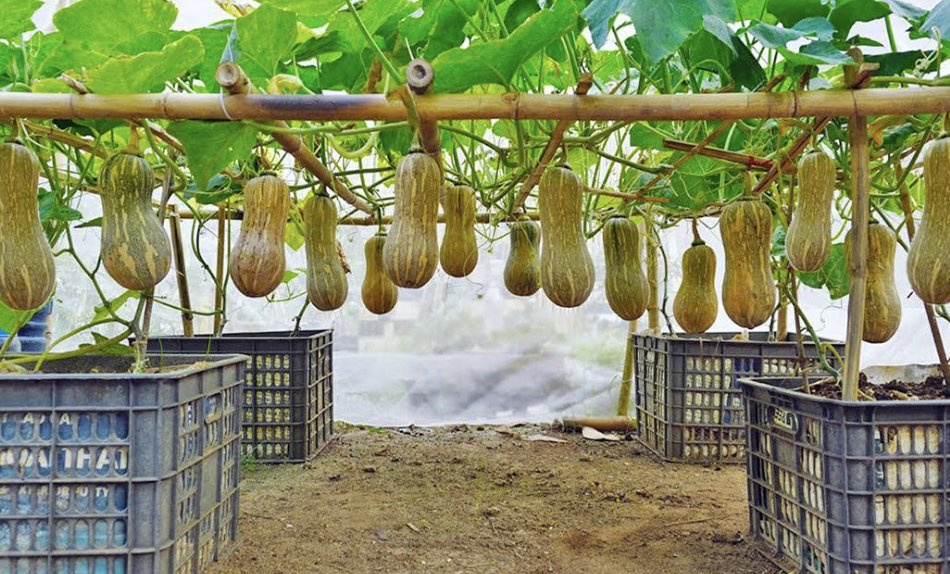Growing pumpkins in containers can be a fulfilling endeavor, offering fresh harvests even with limited space. Here’s a detailed guide to help you successfully cultivate pumpkins at home:
Choosing the Right Container:
- Size: Opt for a container of at least 15 gallons to accommodate the pumpkin plant’s root system.
- Depth: Ensure a depth of at least 18 inches to accommodate the deep roots.
- Drainage: Drill holes in the bottom for proper drainage, preventing waterlogging.
Selecting the Right Pumpkin Variety:
- Container-Friendly Varieties: Choose compact or bush varieties like ‘Small Sugar,’ ‘Baby Boo,’ or ‘Jack Be Little’.
- Consider Space: Select a variety that suits your container’s size.
Soil and Planting:
- Soil Mix: Use a well-draining potting mix enriched with compost or aged manure.
- Planting Seeds: Sow 2-3 seeds about 1 inch deep in the center of the container and thin to the healthiest seedling.
- Spacing: If planting multiple seeds, space them 18-24 inches apart.
Watering and Sunlight:
- Watering: Keep soil consistently moist but not waterlogged, allowing it to dry slightly between waterings.
- Sunlight: Place the container in a spot receiving at least 6-8 hours of sunlight daily.
Care and Maintenance:
- Support: Install a trellis or support structure as vines grow to promote airflow and prevent rot.
- Fertilization: Apply balanced, slow-release fertilizer or liquid fertilizer diluted to half strength every 2-3 weeks.
- Pruning: Trim excess foliage and smaller fruits to redirect energy to the main pumpkin.
Pest and Disease Control:
- Pests: Regularly inspect for aphids, squash bugs, or cucumber beetles and use organic insecticidal soap or neem oil for control.
- Diseases: Prevent powdery mildew by ensuring good airflow and using fungicides if needed.
Harvesting:
- Timeline: Pumpkins mature in 75-100 days.
- Signs of Maturity: Look for consistent color, hard rind, and dried stem. A hollow sound when tapped indicates readiness.
- Harvesting: Use pruning shears to cut pumpkins from the vine, leaving a few inches of stem attached.
Growing pumpkins in containers requires attention to soil quality, watering, sunlight, and pest control. With proper care, you can enjoy the satisfaction of harvesting your own pumpkins at home. Remember, gardening is a learning process, so embrace the journey and learn from each attempt for future success.
